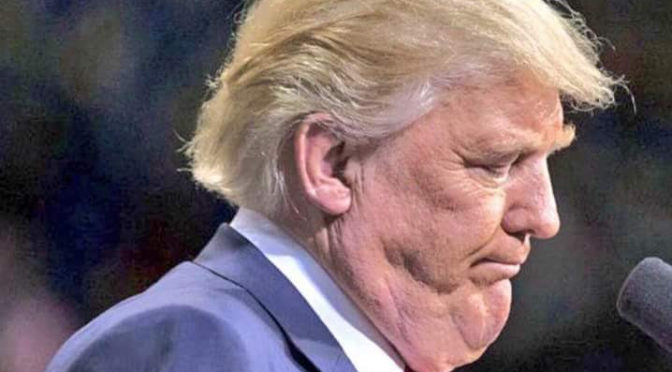President Donald Trump‘s full-throated support for fossil fuel production and his climate change denial have raised concerns about the future of renewable energy projects in America, but some investors believe the president cannot hold back solar and wind energy deployment — or alternative energy stocks.
Those investors say goals adopted by more than half of U.S. states are what’s driving growth in renewable energy projects, and Trump will have little effect on these efforts. They also note that more corporations are pledging to draw power from renewable sources, and lawmakers on both sides of the aisle last month renewed subsidies for solar and wind energy firms.
The new president made clear in his 2015 book, “Crippled America,” that he believes renewable energy is a bad investment. Even developing alternative forms of energy from renewable sources is “a big mistake,” he said.
“To begin with, the whole push for renewable energy is being driven by the wrong motivation, the mistaken belief that global climate change is being caused by carbon emissions. If you don’t buy that — and I don’t — then what we have is really just an expensive way of making the tree-huggers feel good about themselves,” Trump wrote.
However, investors need to separate rhetoric from reality when it comes to Trump, said David Richardson, global head of marketing at Impax Asset Management, an investment firm that manages $6.3 billion and specializes in environmentally sustainable companies.
“While the rhetoric is absolutely negative in terms of advocating pulling out of the Paris Climate Agreement, ramping up coal, ramping up fossil fuels and being fairly quiet on the support of renewable energy, we think the reality is different,” he said.
In its latest Annual Energy Outlook, the U.S. Energy Information administration projected renewable energy consumption will grow faster than any other source through 2040, because capital costs fall as more solar and wind farms crop up and federal and state policies encourage their construction.
Currently, 29 states have renewable fuel standards. Richardson said they have not backed away from those commitments, and the White House has little influence on state and local rules for solar and wind projects.
EIA projections for U.S. energy consumption
On Friday, California released a new plan to cut carbon emissions to 40 percent below 1990 levels — the same day Trump reaffirmed his pledge on the newly updated White House website to cancel former President Barack Obama‘s Climate Action Plan.
This is not just a “blue state” issue, either. Former Texas Gov. Rick Perry repeatedly invoked his state’s leading position in wind power generation during his Senate confirmation hearing to become U.S. Energy Secretary last week.
Those trends could benefit the makers of wind turbines and blades, a well as the companies that manufacture components for solar panels and developers of large-scale solar farms, Richardson says.
“As investors, we’re making lemonade out of lemons, which is to say there’s going to be some interesting buying opportunities for investors who truly understand these markets,” Richardson said.
California-based tech companies continue to set ambitious renewable energy targets, and the trend is gaining steam beyond the sector as corporations seek to burnish their environmental credentials, said Roberto Cominotto, investment director for energy equities at Global Asset Management.
Wal-Mart, the world’s largest retailer, announced in November it aims to draw 50 percent of its power from clean and renewable sources by 2025.
Source: DSIRE
Global Asset Management is invested in wind power equipment companies like TPI and Gamesa, wind farm operators NextEra Energy and Pattern Energy and Israel’s Solar Edge.
Cominotto said he is looking for other opportunities in the industry amid weak share prices, but he has pared back his portfolio’s allocation to U.S. wind and solar energy-exposed stocks last year. But that is not directly due to Trump’s nomination, he said.
Solar module manufacturers are struggling, because prices are falling as global players battle for market share, making it harder to turn a profit. Cominotto wants to see the current downturn bottom — which he says could happen by mid-2017 — before making investment decisions.
Expectations for higher interest rates have also made him more cautious on wind power companies. Higher rates can result in more expensive financing for wind farms.
EIA projections for U.S. renewable energy consumption
Richardson, however, said profit margins are healthy in the wind power industry, particularly among turbine makers, so the sector should be able to absorb higher financing costs.
Neither Richardson nor Cominotto expect Trump to ultimately push back on Congress’s decision to renew federal tax credits for solar and wind power. Richardson notes that the solar industry is creating jobs faster than coal miners are, and Trump has staked his presidency on buying and hiring American. Cominotto points out that wind energy has huge potential in Texas and Iowa, two states that Trump carried in the election.
Brad Lamensdorf, CEO of investment advisory Active Alts, takes a dimmer view of renewable energy firms, because he believes they’re still too dependent on subsidies and will struggle in a Trump administration.
However, rising prices for natural gas — which has displaced coal in U.S. electricity generation — could eventually create an opportunity for renewable energy, he said.
Renewables have “had very competitive landscape versus natural gas. If natural gas were to jump 50 to 70 percent in price, all of a sudden, it will make renewables look a little better,” he said.
cnbc.com


